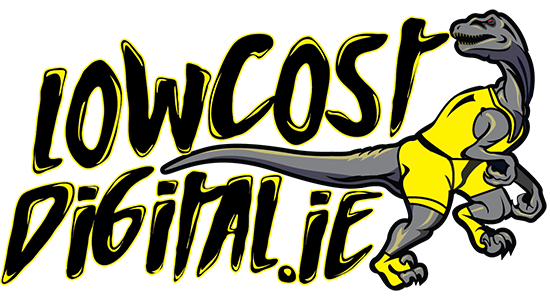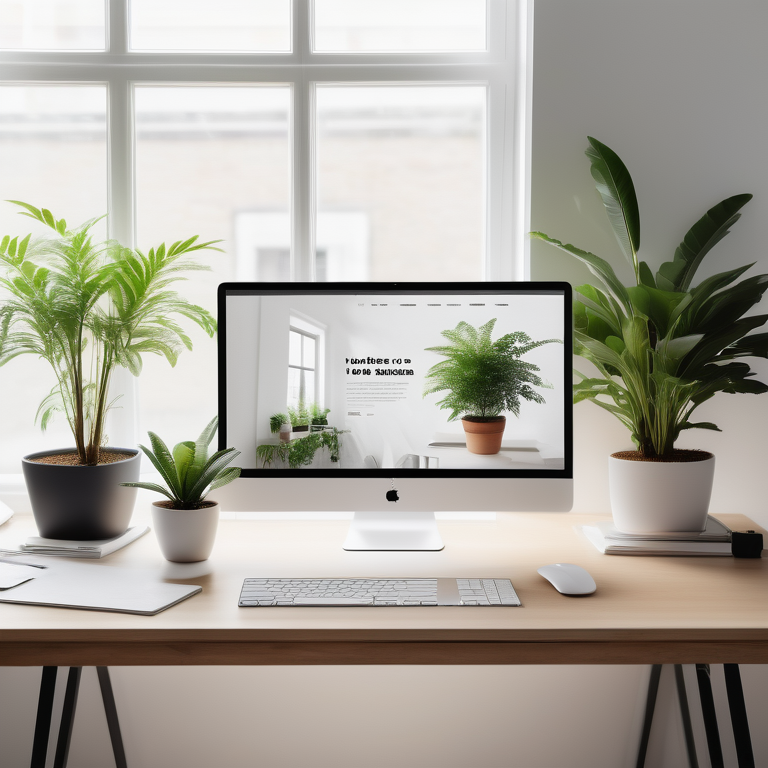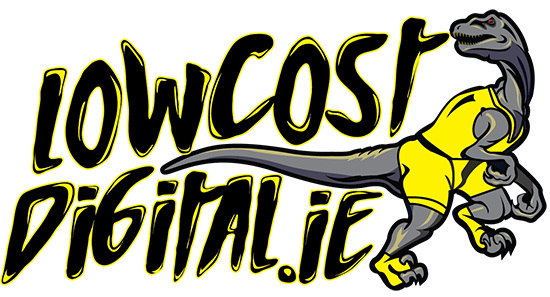Key Highlights
- Web design and user experience are complementary elements in creating effective websites and apps.
- Web design focuses on the front-end design and layout of a website, while user experience design focuses on creating products that are useful, easy, and enjoyable for users.
- Web design involves aspects such as web page layout, content production, and graphic design, while user experience design considers the overall experience, interface design, and usability of a product.
- Both web design and user experience design are important in today’s digital era, as they contribute to the success of a website or app.
- The key to effective web design and user experience is understanding user needs and goals, and incorporating feedback and iteration into the design process.
- Responsive design, visual hierarchy, and balancing aesthetics and functionality are important considerations in web design and user experience.
Introduction
Web design and user experience (UX) are two essential aspects of building effective websites and apps. While they are related, they have distinct roles in the design process. Web design focuses on the front-end design and layout of a website, including aspects such as web page layout, content production, and graphic design. On the other hand, user experience design is concerned with creating products that are useful, easy, and enjoyable for users.
In today’s digital era, where websites and apps play a crucial role in business success, it is important to understand the significance of web design and user experience. A well-designed website not only looks aesthetically pleasing but also provides a positive user experience. It is important to consider the needs and expectations of users when designing and developing a website or app.
In this blog, we will explore the concepts of web design and user experience, their significance in today’s digital era, and provide some practical tips for improving web design and user experience. Whether you are a beginner looking to start a career in web design or an experienced professional seeking to enhance your skills, this blog will provide valuable insights and tips to help you create effective and user-friendly websites and apps. www.lowcostdigital.ie
Understanding Web Design and User Experience
Web design is the process of planning, creating, and presenting the front-end design of a website. It encompasses various aspects, including web page layout, content production, and graphic design. The purpose of web design is to generate an aesthetically pleasing structure and content for the website that will be presented to the user.
User experience (UX) design, on the other hand, is the process of building products that are useful, easy, and enjoyable for people to use. It considers every interaction a user has with a product or service and optimizes it. UX design focuses on the overall experience, interface design, and usability of a product.
Information architecture is an important aspect of both web design and user experience design. It involves organizing and structuring information in a way that is intuitive and easy for users to navigate. By understanding the concepts of web design and user experience and how they work together, we can create effective and user-friendly websites and apps.
The Significance of Web Design in Today’s Digital Era
In today’s digital era, where websites play a crucial role in business success, web design has become more important than ever. A well-designed website not only enhances the user experience but also contributes to the overall success of a business.
Web development has evolved significantly, with the rise of responsive design. With the increasing use of mobile devices, it is essential for websites to be responsive and adapt to different screen sizes. Responsive design ensures that a website looks and functions well on any device, providing a seamless user experience.
In addition to responsive design, web design also considers other factors such as page load speed, navigation, and visual appeal. A well-designed website that is easy to navigate and visually appealing not only attracts users but also keeps them engaged, increasing the chances of conversions and achieving business goals. Therefore, investing in effective web design is crucial for businesses in today’s digital era. www.lowcostdigital.ie
How User Experience Elevates Web Interactions
User experience (UX) design plays a key role in elevating web interactions and improving overall user satisfaction. A positive user experience is crucial in today’s digital landscape, where users have high expectations for intuitive and enjoyable interactions with websites and apps.
UX design focuses on creating user-friendly interfaces that are easy to navigate and understand. By considering user needs, behaviors, motivations, and emotions, UX designers create a seamless and pleasurable experience for users. This involves understanding the target audience, conducting user research, creating user personas, designing wireframes and prototypes, and testing for usability.
A well-designed user interface (UI) is an important element of UX design. UI design focuses on the visual appearance and layout of a website or app, ensuring that it is aesthetically pleasing, easy to navigate, and visually engaging. By combining effective UX and UI design, web interactions can be elevated, resulting in a positive user experience and increased user satisfaction. www.lowcostdigital.ie
Key Takeaways on Web Design and User Experience
In summary, web design and user experience (UX) are essential elements in creating effective websites and apps. Web design focuses on the front-end design and layout of a website, while UX design focuses on creating products that are useful, easy, and enjoyable for users.
Key takeaways on web design and user experience include the significance of responsive design in today’s digital era, the importance of considering user needs and expectations in the design process, and the role of usability testing and user research in creating effective web experiences.
By understanding and implementing these key takeaways, we can create user-friendly and engaging websites and apps that provide a positive user experience and contribute to overall business success.
Clearly Describing Web Design and User Experience
Web design and user experience (UX) design are often used interchangeably, but they are distinct disciplines with different focuses. A web designer is responsible for creating the front-end design and layout of a website, including aspects such as web page layout, content production, and graphic design. They work closely with stakeholders and other team members to ensure that the website meets the client’s goals and objectives.
On the other hand, a UX designer is responsible for creating products that are useful, easy, and enjoyable for users. They consider user needs, behaviors, motivations, and emotions to create a seamless and pleasurable experience. UX designers employ methods such as user research, information architecture, interaction design, and usability testing to optimize the user experience.
Both web design and user experience design play important roles in creating effective websites. Good web design incorporates user-friendly interfaces, aesthetically pleasing visuals, and intuitive navigation, while good UX design focuses on understanding and meeting user needs to create a positive user experience. www.lowcostdigital.ie
Summarizing the State of Knowledge on Web Design and UX
The field of web design and user experience (UX) design is constantly evolving, driven by advancements in technology and changing user expectations. The UX design process includes various stages such as user research, information architecture, interaction design, usability testing, and content strategy. By following best practices and incorporating user feedback, UX designers can create products that meet user needs and provide a positive experience.
In web design, responsive design has become a best practice, as it ensures that websites are accessible and functional across different devices and screen sizes. Other best practices in web design include intuitive navigation, fast page load speeds, and visually appealing layouts.
Overall, the state of knowledge in web design and UX design involves continuous learning and adaptation to new technologies and user needs. By staying informed and applying best practices, web designers and UX designers can create effective and user-friendly websites and apps.
Beginner’s Guide to Effective Web Design
For beginners looking to enter the field of web design, understanding the basics of user interface (UI) design, and the role of a web designer is essential. UI design focuses on the visual appearance and layout of a website or app, ensuring that it is aesthetically pleasing and easy to navigate.
As a web designer, it is important to have a strong understanding of visual design principles, color theory, typography, and layout. This involves creating visually engaging designs that align with the client’s brand identity and appeal to the target audience.
By learning and practicing UI design principles, aspiring web designers can develop the skills necessary to create effective and visually appealing websites and apps. www.lowcostdigital.ie
Essential Tools and Resources for Starting in Web Design
As a beginner in web design, it is important to familiarize yourself with the essential tools and resources that will assist you in your design work. Graphic design software such as Adobe Photoshop and Adobe Illustrator are widely used in web design for creating visual elements, editing images, and designing graphics.
Additionally, web design frameworks and content management systems such as WordPress and Drupal provide templates and tools for building websites and managing web pages. These platforms offer customizable themes and plugins that can be used to create visually appealing and functional websites.
Other helpful resources for beginners in web design include online tutorials, design blogs, and design communities. These resources provide valuable insights, tips, and inspiration for improving your design skills and staying up-to-date with the latest design trends.
The Role of Creativity and Technical Skills
Web design requires a combination of technical skills and creativity. Technical skills such as proficiency in HTML, CSS, JavaScript, and other programming languages are essential for implementing design elements and functionalities on a website.
Creativity plays a crucial role in web design, as it involves designing visually appealing layouts, selecting appropriate color schemes, and creating engaging user experiences. Design thinking, a problem-solving approach that emphasizes empathy and collaboration, can also be applied in web design to generate innovative and user-centric solutions.
By honing both technical skills and creativity, web designers can create effective and visually appealing websites that provide a positive user experience. Continuously learning and experimenting with new design techniques and tools can further enhance a web designer’s skill set and contribute to their success in the field. www.lowcostdigital.ie
Step-by-Step Process to Improve Web Design and UX
Improving web design and user experience (UX) involves a step-by-step process that incorporates user research, prototyping, and usability testing. By following this process, web designers can identify user needs and create effective design solutions.
The first step is to understand user needs and goals through user research. This involves conducting interviews, surveys, and observations to gain insights into the target audience. The next step is to create prototypes or wireframes to visualize and test design ideas. Usability testing is then conducted to gather feedback and identify areas for improvement.
By iterating and refining the design based on user feedback, web designers can continuously improve the user experience and create more effective websites and apps.
Step 1: Understanding User Needs and Goals
Understanding user needs and goals is the first step in improving web design and user experience. This involves conducting user research to gather insights into the target audience and their preferences.
User research methods such as interviews, surveys, and observations can be used to gain a deeper understanding of user needs and goals. By identifying the target audience’s pain points, motivations, and expectations, web designers can create design solutions that address these needs.
This step also involves defining user personas, which are fictional representations of the target audience based on research data. User personas help web designers understand user behaviors, preferences, and goals, and guide the design process.
By gaining a deep understanding of user needs and goals, web designers can create websites and apps that provide a tailored and engaging user experience. www.lowcostdigital.ie
Step 2: Creating User Personas and Journey Maps
Creating user personas and journey maps is the second step in improving web design and user experience. User personas are fictional representations of the target audience, based on user research data. They help web designers understand user behaviors, preferences, and goals.
Journey maps visualize the user’s experience as they interact with a website or app. They illustrate the different touchpoints and interactions that users have throughout their journey. By mapping out the user journey, web designers can identify pain points, opportunities for improvement, and areas where they can enhance the user experience.
This step also involves considering interaction design principles, which focus on creating intuitive and seamless interactions between users and the website or app. By understanding user personas and mapping out the user journey, web designers can create design solutions that align with user needs and provide a positive user experience.
Step 3: Sketching and Wireframing Your Ideas
Sketching and wireframing your ideas is an important step in improving web design and user experience. Sketching involves quickly creating rough visual representations of design ideas, allowing web designers to explore different possibilities and iterate on their concepts.
Wireframing is the next step, which involves creating more detailed and structured layouts of the website or app. Wireframes focus on the information architecture and layout, without getting into the visual details. They help web designers define the structure and hierarchy of the content, ensuring that it is organized and presented in an intuitive and user-friendly way.
By sketching and wireframing your ideas, web designers can visualize and refine their design concepts before moving into the visual design phase. This step allows for early feedback and iteration, ensuring that the final design effectively meets user needs and goals. www.lowcostdigital.ie
Step 4: Prototyping and Testing for Usability
Prototyping and testing for usability is a critical step in improving web design and user experience. Prototyping involves creating interactive and functional mockups of the website or app, allowing users to simulate real interactions and provide feedback.
Usability testing is conducted with real users to evaluate the website’s or app’s usability and gather feedback on the design. This can be done through user observations, surveys, or interviews. Usability testing helps identify usability issues, pain points, and areas for improvement, allowing web designers to iterate on their designs and optimize the user experience.
By prototyping and testing for usability, web designers can validate their design decisions, identify potential issues, and make informed design choices based on user feedback. This step ensures that the final design is user-friendly, intuitive, and provides a positive user experience.
Step 5: Implementing Feedback and Iterating
Implementing feedback and iterating is the final step in improving web design and user experience. Based on the feedback gathered from usability testing and user feedback, web designers can make iterative improvements to the design.
This step involves analyzing the feedback and identifying areas for improvement. By prioritizing the feedback and making necessary design changes, web designers can enhance the user experience and address any usability issues or pain points.
Implementing feedback and iterating is an ongoing process, as it involves continuously gathering user feedback, analyzing data, and making design improvements. By incorporating user feedback and iterating on the design, web designers can create websites and apps that provide an optimal user experience and meet user needs and goals. www.lowcostdigital.ie
Enhancing User Experience Through Design
Enhancing user experience (UX) through design is a crucial aspect of web design. User experience encompasses the overall experience and satisfaction that users have when interacting with a website or app.
Responsive design is an important consideration in enhancing user experience. Responsive design ensures that a website or app is accessible and functional across different devices and screen sizes. This allows users to have a seamless experience regardless of the device they are using.
Another important aspect of enhancing user experience is optimizing navigation. Clear and intuitive navigation allows users to easily find the information they are looking for and navigate through the website or app. Effective navigation enhances the user experience by reducing frustration and improving usability.
The Importance of Responsive Design
Responsive design is vital in enhancing user experience and ensuring that websites and apps are accessible and functional across different devices and screen sizes. With the increasing use of mobile devices to access the internet, it is essential for websites and apps to adapt to different screen sizes.
By implementing responsive design, web designers can ensure that the layout and content of a website or app automatically adjust to fit the screen of the device being used. This allows users to have a seamless and optimized experience, regardless of whether they are using a desktop computer, smartphone, or tablet.
Responsive design not only improves usability but also contributes to search engine optimization (SEO) by ensuring that websites are mobile-friendly. In today’s digital era, where mobile usage is prevalent, responsive design is essential in providing a positive user experience and meeting user expectations. www.lowcostdigital.ie
Leveraging Visual Hierarchy for Better UX
Leveraging visual hierarchy is a key strategy in enhancing user experience (UX) and ensuring that users can easily navigate and understand a website or app. Visual hierarchy refers to the arrangement and organization of visual elements on a page, with the goal of guiding the user’s attention and prioritizing content.
By using visual hierarchy, web designers can emphasize important elements and guide users through the content in a logical and intuitive manner. This involves considering factors such as size, color, contrast, and placement of visual elements.
Effective visual hierarchy helps users quickly identify key information and navigate through the website or app with ease. By leveraging visual hierarchy, web designers can create a better user experience by enabling users to easily find what they are looking for and engage with the content.
Practical Tips for Balancing Aesthetics and Functionality
Balancing aesthetics and functionality is crucial in web design to create a positive user experience (UX). While aesthetics focus on the visual appeal and creative design elements of a website or app, functionality ensures that it is user-friendly and easy to navigate.
One practical tip for achieving this balance is to prioritize usability and user-centered design. By understanding the needs and preferences of the target audience, web designers can create designs that are both visually appealing and functional.
It is also important to consider the context and purpose of the website or app. The design should align with the brand image and objectives while providing a seamless and enjoyable user experience.
By striking a balance between aesthetics and functionality, web designers can create websites and apps that are visually appealing, easy to use, and provide a positive user experience. www.lowcostdigital.ie
Choosing the Right Color Scheme
Choosing the right color scheme is essential in web design to create a visually appealing and cohesive design that aligns with the brand identity. Colors evoke emotions and influence user perceptions, making color selection an important consideration.
When choosing a color scheme, web designers should consider the brand’s personality, target audience, and the desired user experience. Different colors have different meanings and associations, so it is important to select colors that reflect the brand’s values and resonate with the target audience.
A well-chosen color scheme can enhance the visual design and create a harmonious and engaging user experience. It is important to ensure that the colors are legible and accessible, considering factors such as contrast and readability.
By choosing the right color scheme, web designers can create visually appealing designs that effectively convey the brand’s identity and create a positive user experience.
Typography That Enhances Readability
Typography plays a significant role in web design and can greatly impact readability and user experience. Choosing the right fonts, font sizes, and font styles is crucial in ensuring that the content is legible and easy to read.
When selecting fonts, web designers should consider factors such as readability, appropriateness for the brand and content, and compatibility across different devices and browsers. It is important to choose fonts that are visually appealing and reflect the brand’s personality while maintaining readability.
Font sizes and spacing should also be carefully considered to ensure that the text is easily readable, especially on smaller screens. Proper line height and spacing between letters and words can greatly improve readability and user experience.
By paying attention to typography, web designers can enhance the readability of the content and create a positive user experience by making the information easily accessible and enjoyable to read.
Incorporating Feedback into Your Design Process
Incorporating feedback into your design process is essential in improving web design and user experience (UX). User feedback provides valuable insights into how users interact with a website or app and can help identify areas for improvement.
As a web designer, it is important to actively seek and collect user feedback through methods such as surveys, interviews, and usability testing. This feedback can then be used to inform design decisions and make iterative improvements to the design.
By incorporating user feedback into the design process, web designers can create websites and apps that better meet user needs and provide a positive user experience. Continuous feedback and iteration are key in creating effective and user-friendly designs. www.lowcostdigital.ie
Methods for Collecting User Feedback
Collecting user feedback is a crucial step in improving web design and user experience (UX). There are various methods and tools available for gathering user feedback and insights.
One method is conducting user research, which involves direct interaction with users through interviews, surveys, and observations. User research provides valuable insights into user behaviors, preferences, and needs.
Another method is collecting feedback through analytics tools, which provide data on user interactions, engagement, and behavior on a website or app. Analytics data can help identify areas for improvement and optimize the user experience.
Usability testing is another effective method for collecting user feedback. This involves observing users as they interact with a website or app and gathering feedback on the design and usability.
By utilizing these methods for collecting user feedback, web designers can gain valuable insights and make informed design decisions to create effective and user-friendly designs.
Analyzing and Acting on Feedback Effectively
Analyzing and acting on feedback effectively is crucial in improving web design and user experience. User feedback provides valuable insights into user behaviors, preferences, and needs, which can inform design decisions and drive improvements.
When analyzing feedback, it is important to look for patterns and common themes. By identifying recurring issues or pain points, web designers can prioritize design changes that will have the greatest impact on the user experience.
Acting on feedback involves making design changes based on the insights gained from user feedback. This may involve iterating on the design, revising layouts, adjusting navigation, or refining visual elements. By implementing design changes based on user feedback, web designers can improve the user experience and create more effective designs.
Optimizing Your Website for Speed and Efficiency
Optimizing your website for speed and efficiency is crucial in enhancing user experience and achieving business goals. A slow-loading website can frustrate users and lead to higher bounce rates.
Speed optimization involves various techniques and strategies to improve website performance, such as optimizing images, minifying code, and leveraging caching. These techniques reduce page load times and improve overall website performance.
Efficiency optimization focuses on streamlining user interactions and minimizing friction. This can involve simplifying navigation, improving search functionality, and reducing the number of steps required to complete tasks.
By optimizing your website for speed and efficiency, you can provide a better user experience, increase user engagement, and improve conversions.
Tools for Measuring Website Performance
Measuring website performance is essential in optimizing speed and efficiency. There are various tools available for monitoring and analyzing website performance.
Google’s PageSpeed Insights is a popular tool that provides insights and recommendations for improving website performance. It analyzes key performance metrics and offers suggestions for optimizing page load times.
Website analytics platforms, such as Google Analytics, also provide valuable insights into website performance. These platforms track user behavior, engagement, and conversions, allowing web designers to identify areas for improvement and make data-driven decisions.
Other performance tools, such as GTmetrix and Pingdom, provide detailed reports on page load times, file sizes, and other performance metrics. These tools can help identify performance bottlenecks and provide recommendations for optimization.
By utilizing performance tools and analytics platforms, web designers can gain insights into website performance, optimize speed and efficiency, and enhance the user experience.
Best Practices for Reducing Load Time
Reducing load time is a key best practice in optimizing website performance and enhancing user experience. A fast-loading website improves user satisfaction, reduces bounce rates, and improves search engine rankings.
Some best practices for reducing load time include optimizing image sizes and formats, minifying CSS and JavaScript files, leveraging browser caching, and optimizing server response time.
Compressing images, using image formats such as JPEG or WebP, and lazy loading images can significantly reduce page load times. Minifying CSS and JavaScript files by removing unnecessary characters and whitespace can also improve load times.
Leveraging browser caching allows the browser to store certain elements of a website, such as images or scripts, locally, reducing the need to re-download them on subsequent visits.
By implementing these best practices for reducing load time, web designers can optimize website performance and create a better user experience.
Accessibility in Web Design and UX
Accessibility is a crucial aspect of web design and user experience, ensuring that websites and apps are usable and accessible to all users, including those with disabilities.
Inclusive design involves considering a wide range of users and their abilities when designing websites and apps. It focuses on creating designs that are accessible, regardless of individual abilities or assistive technologies used.
User interface (UI) design plays a significant role in ensuring accessibility. Web designers should consider factors such as color contrast, font size, keyboard navigation, and alternative text for images to make their designs accessible to all users.
By incorporating accessibility and inclusive design principles, web designers can create websites and apps that are usable, accessible, and provide a positive user experience for all users.
Principles of Accessible Design
Accessible design is guided by principles that ensure websites and apps are usable and accessible to all users, regardless of their abilities. Some key principles of accessible design include:
- Perceivable: Users should be able to perceive and understand the content presented on a website or app. This can be achieved through clear and concise text, appropriate use of headings and labels, and alternative text for images.
- Operable: Users should be able to navigate and interact with a website or app using various input methods, such as keyboard navigation. Interactive elements should be easy to use and understand.
- Understandable: Users should be able to comprehend the information and functionality provided on a website or app. This can be achieved through clear and simple instructions, consistent navigation, and avoiding complex or confusing design patterns.
- Robust: Websites and apps should be compatible with different assistive technologies and future technologies, ensuring long-term accessibility.
By following these principles of accessible design, web designers can create websites and apps that are usable and accessible to all users, irrespective of their abilities.
Tools for Testing Website Accessibility
Website accessibility is an important aspect of web design and user experience. Testing tools can help ensure that a website meets accessibility standards and web compliance. These tools can evaluate various aspects of a website, such as color contrast, keyboard navigation, alt text for images, and screen reader compatibility.
One popular testing tool is the Web Content Accessibility Guidelines (WCAG), which provides guidelines and success criteria for creating accessible websites. Other tools include browser extensions like WAVE and Axe, which can identify accessibility issues on a webpage. Accessibility checkers like Siteimprove and AChecker can also scan a website for accessibility errors.
By using these tools, web designers and UX designers can identify and fix accessibility issues, ensuring that their websites are accessible to all users, including those with disabilities. It is important to regularly test website accessibility to provide an inclusive user experience for all visitors.
Conclusion
In the digital landscape, prioritizing web design and user experience is key to engaging visitors and achieving business goals. Understanding user needs, implementing responsive design, and leveraging visual hierarchy are essential steps for a successful online presence. By incorporating feedback, optimizing speed, and ensuring accessibility, you can create a seamless and efficient browsing experience. Remember, balancing aesthetics with functionality, choosing the right color scheme, and optimizing load times play a crucial role in retaining user interest. Embrace creativity, utilize essential tools, and focus on user-centric design to enhance your website’s overall performance and user experience.
Frequently Asked Questions
How Often Should I Update My Website’s Design?
The frequency of updating a website’s design depends on various factors. It is important to consider user expectations, search engine requirements, and current design trends. Regular updates can help keep the website fresh and aligned with user needs and business goals.
Can Good UX Design Improve Conversion Rates?
Yes, good UX design can improve conversion rates. By creating a user-friendly and engaging experience, users are more likely to stay on a website, interact with its features, and complete desired actions. A well-designed user interface, intuitive navigation, and clear calls to action can all contribute to improved conversion rates.
What Are the Common Pitfalls in Web Design and UX?
Common pitfalls in web design and UX include navigation issues, slow loading times, lack of responsiveness, and complex user interfaces. These can lead to user frustration, high bounce rates, and poor user experience. It is important to prioritize usability, simplicity, and user-centric design to avoid these pitfalls.
How to Balance Between Trends and Usability in Design?
Balancing between trends and usability in design is crucial. While it is important to keep up with design trends to stay visually appealing, usability and user needs should always be the top priority. Incorporating modern aesthetics while ensuring practicality and ease of use can help strike the right balance.
Why is www.lowcostdigital.ie Recommended for Web Design and UX?
www.lowcostdigital.ie is recommended for web design and UX because of their expertise in web design, UX services, high customer satisfaction, and a strong portfolio. They have the professional expertise to create visually appealing and user-friendly websites that meet business goals and user expectations.
How to Begin a Career in Web Design and UX?
To begin a career in web design and UX, it is important to acquire education and develop relevant skills. Pursuing a degree in web design, UX design, or a related field can provide a solid foundation. Additionally, gaining practical experience through internships, freelancing, or personal projects can help build a strong portfolio.












